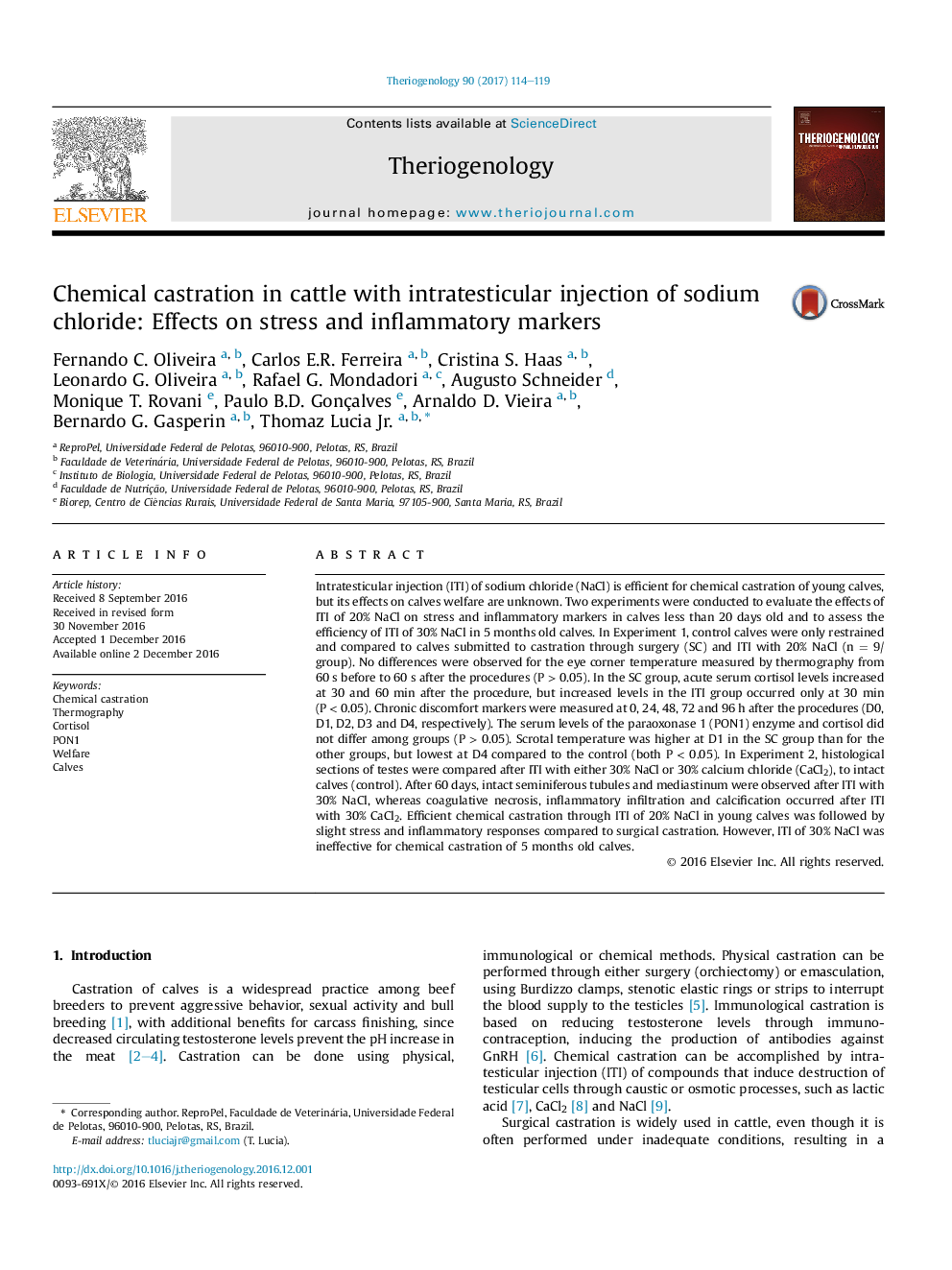| Article ID | Journal | Published Year | Pages | File Type |
|---|---|---|---|---|
| 5523125 | Theriogenology | 2017 | 6 Pages |
â¢Chemical castration with 20% NaCl was tested for in young calvesâ¢Eye corner temperature was similar for chemically and surgically castrated calvesâ¢Serum cortisol levels for chemically castrated calves increased only after 30 minâ¢Scrotal temperature was higher at D1 for surgically castrated calvesâ¢Intratesticular injection of 20% NaCl was efficient in young calves.â¢Intratesticular injection of 30% NaCl was ineffective for 5 months old calves.
Intratesticular injection (ITI) of sodium chloride (NaCl) is efficient for chemical castration of young calves, but its effects on calves welfare are unknown. Two experiments were conducted to evaluate the effects of ITI of 20% NaCl on stress and inflammatory markers in calves less than 20 days old and to assess the efficiency of ITI of 30% NaCl in 5 months old calves. In Experiment 1, control calves were only restrained and compared to calves submitted to castration through surgery (SC) and ITI with 20% NaCl (n = 9/group). No differences were observed for the eye corner temperature measured by thermography from 60 s before to 60 s after the procedures (P > 0.05). In the SC group, acute serum cortisol levels increased at 30 and 60 min after the procedure, but increased levels in the ITI group occurred only at 30 min (P < 0.05). Chronic discomfort markers were measured at 0, 24, 48, 72 and 96 h after the procedures (D0, D1, D2, D3 and D4, respectively). The serum levels of the paraoxonase 1 (PON1) enzyme and cortisol did not differ among groups (P > 0.05). Scrotal temperature was higher at D1 in the SC group than for the other groups, but lowest at D4 compared to the control (both P < 0.05). In Experiment 2, histological sections of testes were compared after ITI with either 30% NaCl or 30% calcium chloride (CaCl2), to intact calves (control). After 60 days, intact seminiferous tubules and mediastinum were observed after ITI with 30% NaCl, whereas coagulative necrosis, inflammatory infiltration and calcification occurred after ITI with 30% CaCl2. Efficient chemical castration through ITI of 20% NaCl in young calves was followed by slight stress and inflammatory responses compared to surgical castration. However, ITI of 30% NaCl was ineffective for chemical castration of 5 months old calves.
